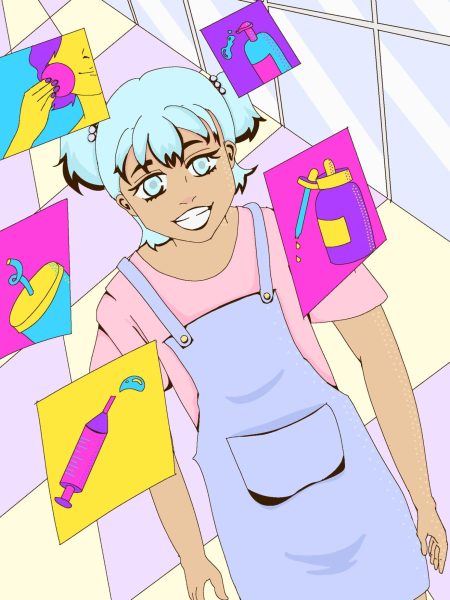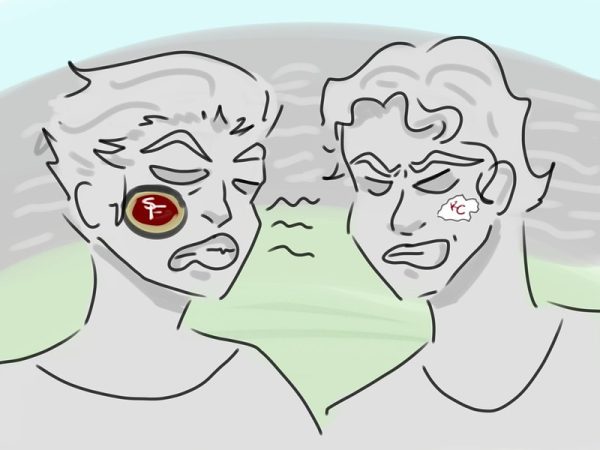Welcome to the world of Fast Fashion, where the clothes you buy have a global impact
The clothing industry’s evolution into Fast Fashion in the 21st century has hurt the environment globally. Each day, millions of people have to live with the consequences of this new clothing industry.
“True Cost” is a documentary that exposes the negative impacts that the global fashion industry has on the environment and introduces viewers to the concept of Fast Fashion: clothing that is quickly — but poorly — produced following fashion trends that appear and disappear from mainstream culture.
This idea is embodied by stores such as H&M, Forever 21 and Zara. Many corporate clothing companies promote this idea, which is to gain more profit; the more clothes they sell, the more money they get. New fashion trends are born every week, which means that there are at least 52 new trends per year. Clothing companies then quickly produce clothes to fulfill these trends. Fashion stock is no longer simply seasonal, and clothing is now so cheap that people often throw away their old, “out-of-style” clothes after a few wears.
This is appealing to consumers, but Fast Fashion has a horrible impact on the lives of millions. According the “True Cost,” one in six people work in the global fashion industry; many are women and children. Every day, they are forced to work in factories or sweatshops, often found in Bangladesh or Cambodia, to mass-produce cheap clothing. These factories pay workers at the most $2 per hour. In contrast, California’s minimum wage is $10 an hour. Many of the people working in sweatshops have absolutely no protection whatsoever. They may work harsh shifts of over 12 hours per day, with no breaks between. These sweatshop workers lack a protective union, which severely limits their freedom and agency.
Furthermore, these factories use harmful chemicals in producing clothes — clothes that you wear everyday.
According to Upmanu Lall in his “State of the Planet” blog by Columbia University, the Punjab region of India, where virtually all of the cotton used in these factories is grown, has been heavily affected. Cotton production involves heavy pesticides and toxins. These pesticides are necessary due to genetically modified cottonseeds, which are virtually the only seeds available for regional farmers and need pesticides to grow. Thus, farmers must use chemicals that are naturally toxic to the human body and the environment. As a result of pesticide use, this region of India has greatly suffered: Punjab has seen a dramatic spike in cancers, mental illnesses and birth defects among its residents in the last 20 years. According to “True Cost,” up to 80 children in a small town of less than 5,000 people have suffered from the exact same mental handicap, proving the toxicity of these pesticides.
Monsanto, the company that produces the genetically modified (GM) cottonseeds, refuses to admit that pesticides are a direct cause of the recent spike in health problems; yet, research done by Dr. Pritpal Singh proves otherwise. Monsanto stubbornly declines to acknowledge environmental changes in Punjab, and refuses to compensate victims of the harmful pesticides used in the farming of GM cottonseed.
These toxins transfer from the cotton seeds to the textiles. Factories use the already chemically-induced seeds to make clothes, adding more toxins along the way.
In addition, leather tanning materials are one of the most harmful materials produced by the fashion industry. It has been linked to pollution of natural water sources around factories as well as an increase in the risk of cancer among factory workers from 20 percent to 50 percent.
These are just a couple of the hundreds of deadly chemicals used in the production of clothing for stores like Zara and Topshop to produce cheap and disposable clothing for consumers.
Consumers easily disposing clothes makes the situation worse. Clothes, ridden with harmful toxins get dumped into landfills and the ocean everyday. Overall, the world consumes 80 million pounds of textiles annually. This is a 400 percent increase from just 20 years ago. An average American now discards 82 pounds of textiles a year. This amounts to a shocking 11 billion pounds of textile waste from the United States alone (“True Cost”) .
The pollution from the textile industry has led to many environmental crises, yet corporations have suffered no consequences. They still outsource to sweatshops that use harmful chemicals, which then pollute local areas and cause health issues.
There are many ways individuals can help this crisis. Many small clothing companies labeled “Fair Trade” use environmentally-safe materials. However, their clothes are expensive when compared to Fast Fashion. Thus, it might be difficult for students to afford Fair Trade clothing. Luckily, there are also other options.
Many stores have recently changed their production of clothing to a more environmentally friendly line. H&M, for example, has a clothing line titled “Sustainability,” which promotes the long-term use of clothing. These clothes are less harmful to the environment and consist of higher-quality fabric than other clothes typically found in H&M.
Although this is not a complete solution to Fast Fashion, it is better for the environment than typical production systems.
Another solution to Fast Fashion is donating to consignment stores like Goodwill or Savers, which resell the clothes for low prices. You can easily donate clothes by going to any local consignment store or dropping off clothes in donation boxes found in large public locations like malls. Donations limit the wastefulness of clothing, and help reduce textile waste in the environment.
When shopping, ask yourself these few questions:
“How sustainable is this? Will I wear this often? Do I really need this article of clothing?”
If you answer “no” to any of these questions, then you are contributing to the vicious cycle of Fast Fashion and the pollution of Earth from the clothing industry.
Remember, the clothes you purchase do not just affect you — they affect the whole world.

Manan was a part of the club his junior year, and is currently in his first year in the journalism class. Last year, he took photos for all major sports events. Manan joined the Tribune to become a better...











